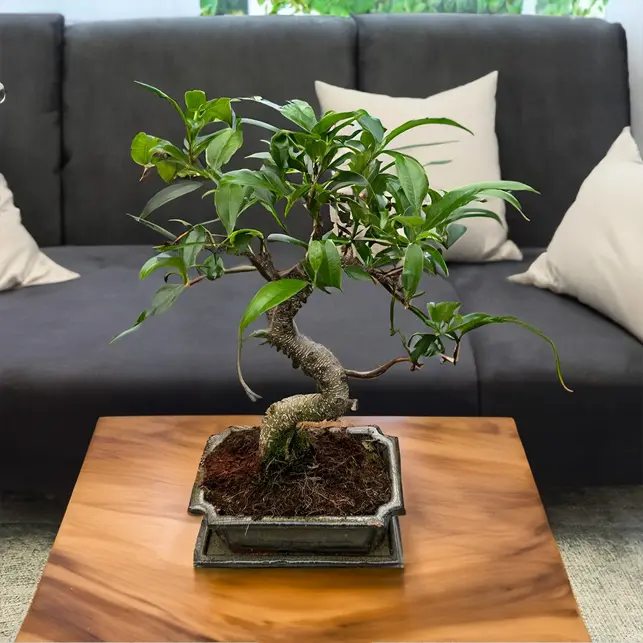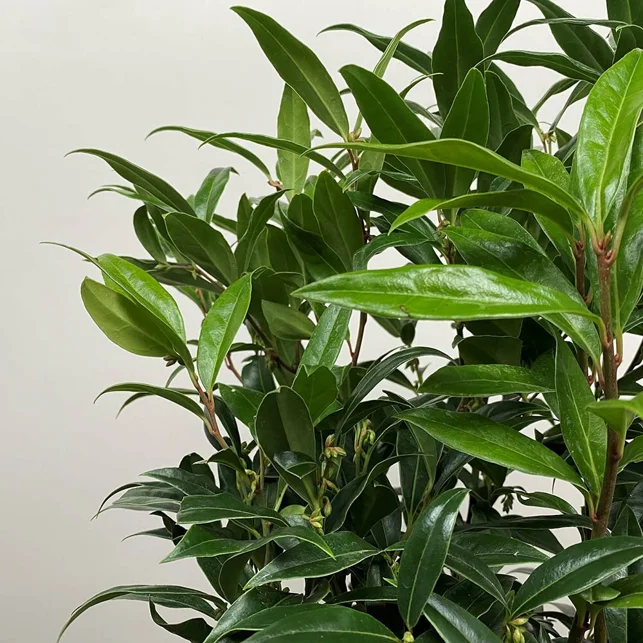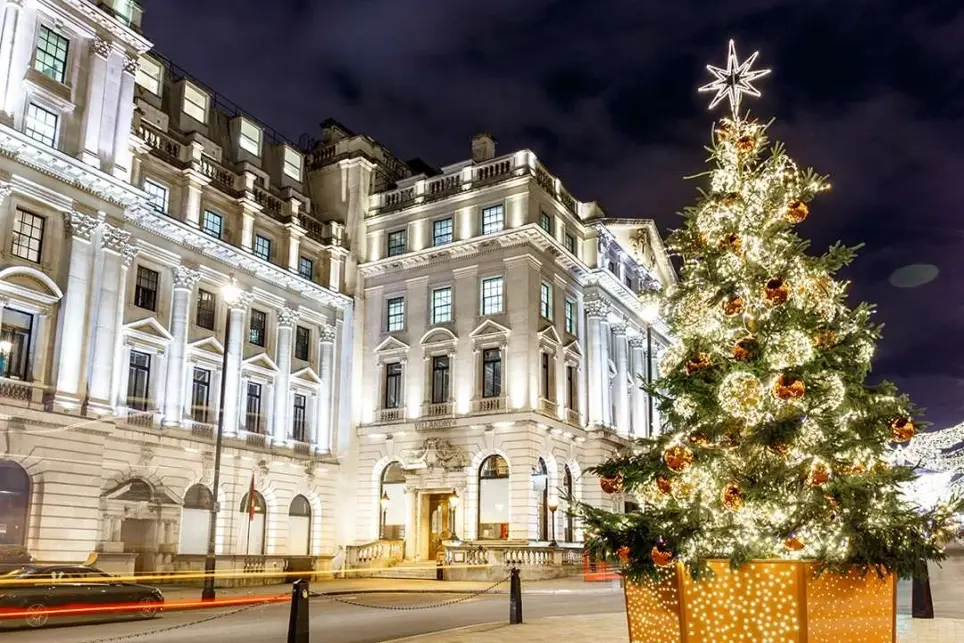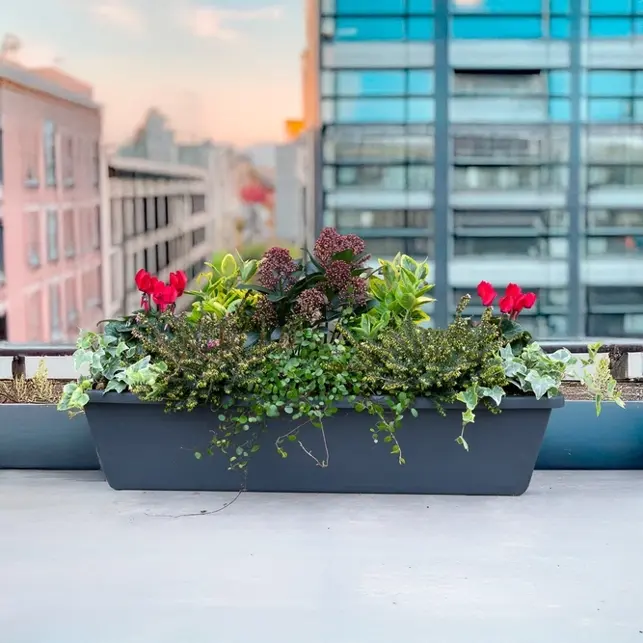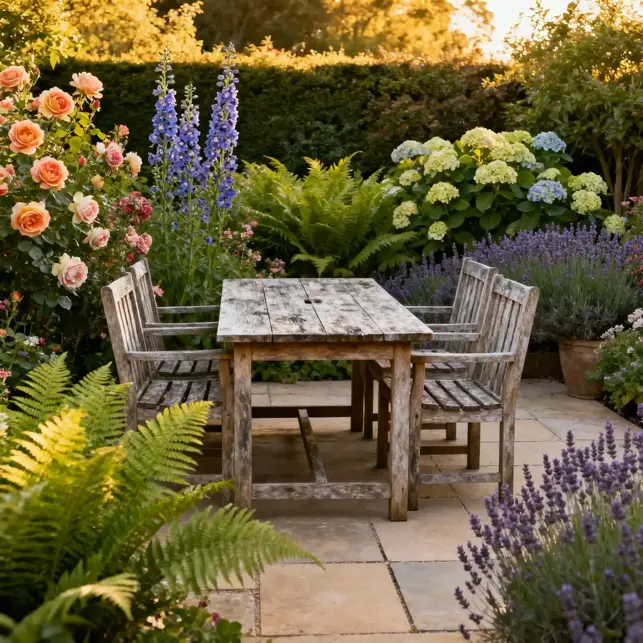
The British gardening landscape is experiencing a transformative period that marries centuries-old horticultural wisdom with cutting-edge sustainability practices.
From the lush Georgian squares of Belsize Park to the innovative roof terraces of Central London, North London's most discerning gardeners are embracing a new era of planting that responds to climate change, urban challenges, and evolving lifestyle needs.
In this article, Boma’s expert horticulturalists reveal the defining trends shaping UK gardens through 2025 and into 2026, with particular focus on how expert plant selection, thoughtful design, and innovative growing techniques are revolutionising outdoor spaces across the capital.
Overview of Key UK Garden Trends
A leading shift in the UK’s gardening world is the expansion of outdoor living, where gardens are now designed as social hubs featuring garden furniture, natural stone walls, and even outdoor kitchens. These elements transform outdoor spaces into extensions of the home, merging style with lifestyle needs while highlighting some of the biggest garden trends of 2025.
At the same time, sustainable gardening is driving plant choices. Gardeners are moving away from working purely with traditional bedding plants, and towards low maintenance plants, perennial vegetables, and rain gardens, which reduce water use and boost biodiversity. Perennial crops and rain-friendly planting schemes are redefining both the ecological and aesthetic value of urban gardens.
Finally, the rise of community gardens captures the social side of this transformation. These shared spaces combine productivity and beauty, showcasing sustainable practices while fostering collaboration. By integrating perennials, edibles, and sustainable design principles, community projects reflect how new trends are reshaping British gardens for long-term resilience and connection.
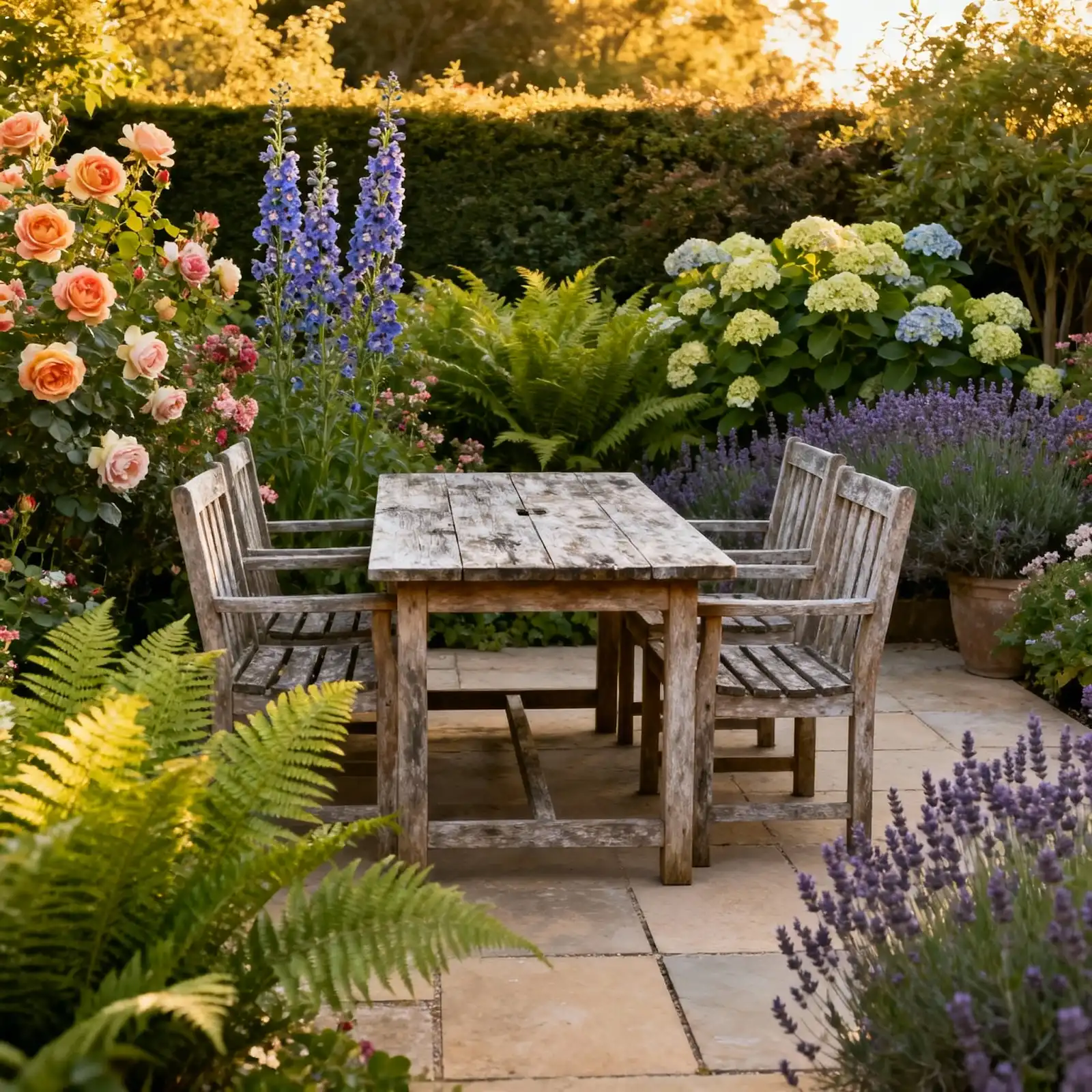
A contemporary UK garden featuring a mix of flowering perennials, ferns, and shrubs around a patio with wooden furniture
Garden Trends UK: 15 Popular Styles, Plants & Ideas From 2025
Climate-Forward and Weather-Resilient Planting
UK gardens are shifting toward climate-forward design, with sustainability guiding planting choices. This means working with nature to build landscapes resilient to Britain’s unpredictable weather.
Gardeners are choosing plants that withstand both drought and flooding. Mediterranean species like olive trees, acers, and bay trees are now common in London, valued for their adaptability to urban conditions and year-round appeal.
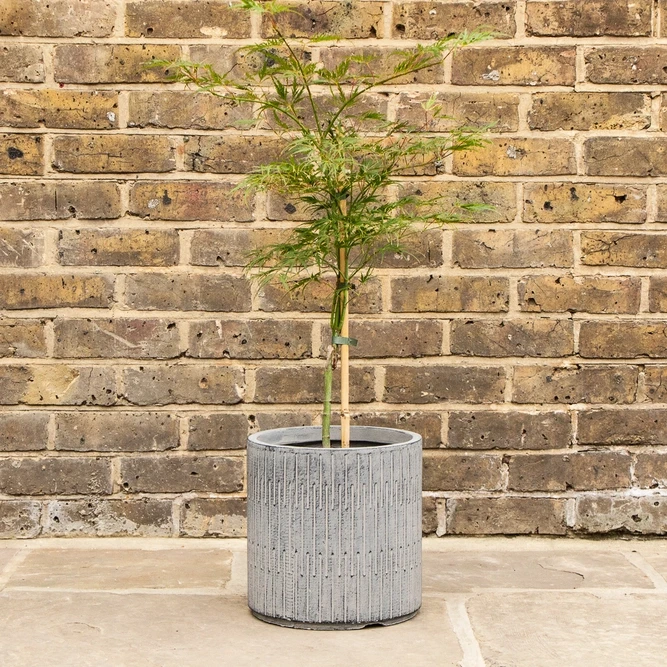
Potted Acer Dissectum - Oslo Black Pot, £59.99
In North London, drought-tolerant perennials such as salvias, heather, and dahlias are replacing traditional bedding plants. These provide vibrant colour, attract pollinators, and thrive with less water and maintenance—ideal for busy city lifestyles.
Simon Toomer, the curator of living collections at Kew Gardens, summed it up well:
“We’re trying to be more positive in our thinking about how we adapt gardens and habitats to the threat of climate change and the carbon cycle, and highlight some of the solutions – or at least the mitigations – that we can make to manage some of the impacts of climate change.”
Clay Soil Solutions for London Gardens
One of the most persistent challenges facing London gardeners involves managing the capital's heavy clay soils, which can become waterlogged in winter yet crack during summer droughts. Expert horticultural advice now emphasises improving drainage through organic matter incorporation, with well-rotted garden compost proving particularly effective for transforming challenging growing conditions.
Watering and irrigation systems specifically designed for London's clay-heavy soil have become essential for gardens ranging from compact Crouch End patios to sprawling Hampstead estates.
These systems must accommodate North London's unpredictable weather patterns, from scorching July droughts to sudden September downpours, making smart, adaptive irrigation crucial for plant survival.
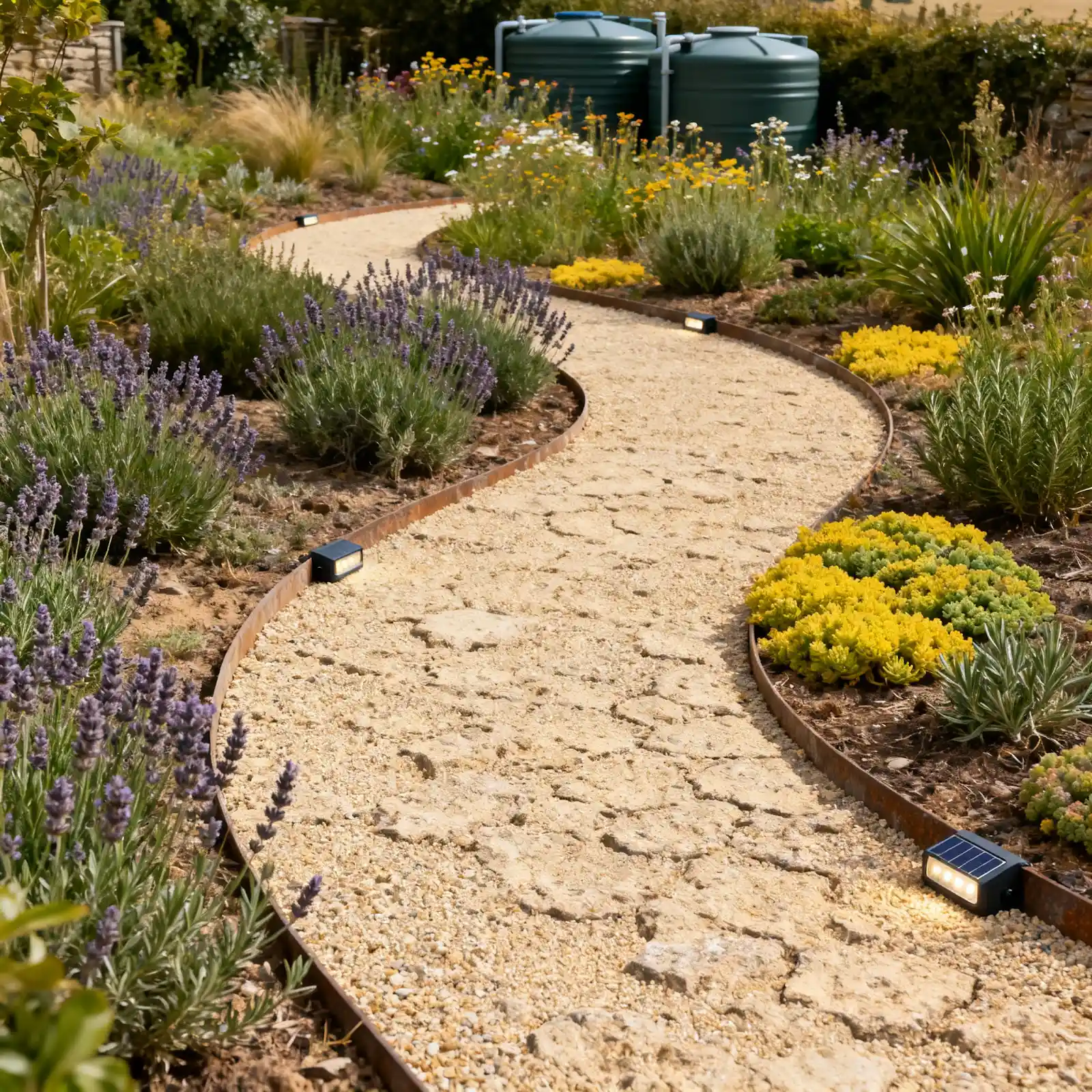 Winding gravel garden path with drought-tolerant plants showcasing sustainable UK landscaping ideas for 2025
Winding gravel garden path with drought-tolerant plants showcasing sustainable UK landscaping ideas for 2025
Outdoor Living, Edible Perennials & Superfruits in Urban Spaces
By 2030, the UK outdoor kitchen market is estimated to be worth $2.5 billion (£1.82bn) according to a report by Grand View Research. With the expansion of outdoor living and an uptick in outdoor kitchens, edible plants go hand in hand with these lifestyle changes.
One major 2025 trend is blending ornamental and edible plants, creating gardens that are both beautiful and productive. Blueberries are especially popular in London, offering spring flowers, summer fruit, and autumn colour. Their compact form and success in containers make them perfect for balconies and roof terraces.
Honeyberries (edible Lonceria) are also rising in popularity. These early-fruiting, low-maintenance plants thrive in UK conditions, providing a productive yet visually appealing option for urban gardens, allotments or fruit cages.
Herbs and Aromatics Integration
Mediterranean herbs like lavender, rosemary, and thyme continue dominating London plantings, but their application is evolving beyond traditional herb gardens. These plants are being integrated into mixed borders where their architectural qualities complement flowering perennials while providing year-round structure and fragrance.
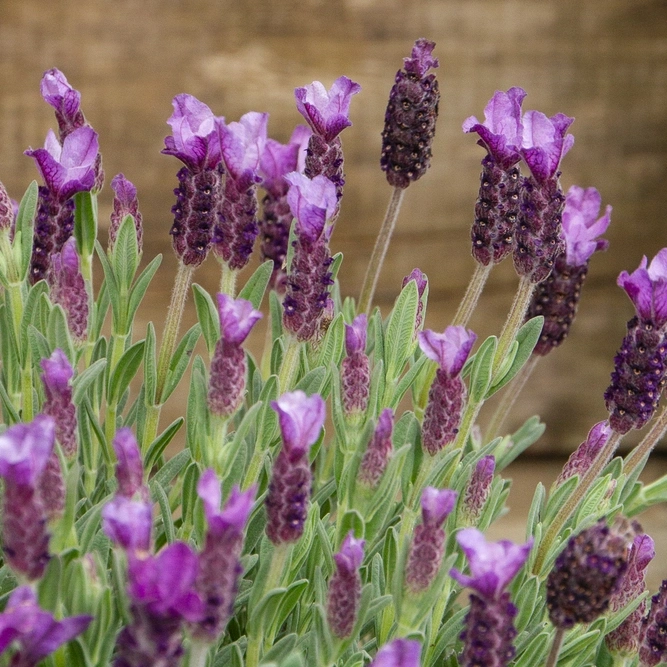
Lavender Stoechas (Pot Size 3L) French Lavender, £19.99
Vertical Gardens, Living Walls and Small Space Innovation
Urban space constraints have sparked remarkable innovation in vertical growing techniques, particularly relevant for London's dense housing areas where every square metre must maximise both aesthetic and functional value.
Vertical gardening is a core component of ‘Hortifuturism’ in urban spaces, and green walls are reaching new heights in 2025, bringing lush vegetation to previously unusable vertical surfaces while providing thermal regulation for buildings. These installations help manage stormwater runoff, reduce urban flooding risks, and create vital wildlife corridors through the city's built environment.
The technology supporting vertical gardens has advanced significantly, with modular systems incorporating integrated irrigation and seasonal plant rotation capabilities. For gardens under 50 square metres, vertical growing can effectively triple available planting space, making it possible to achieve substantial green coverage even in the most constrained urban settings.
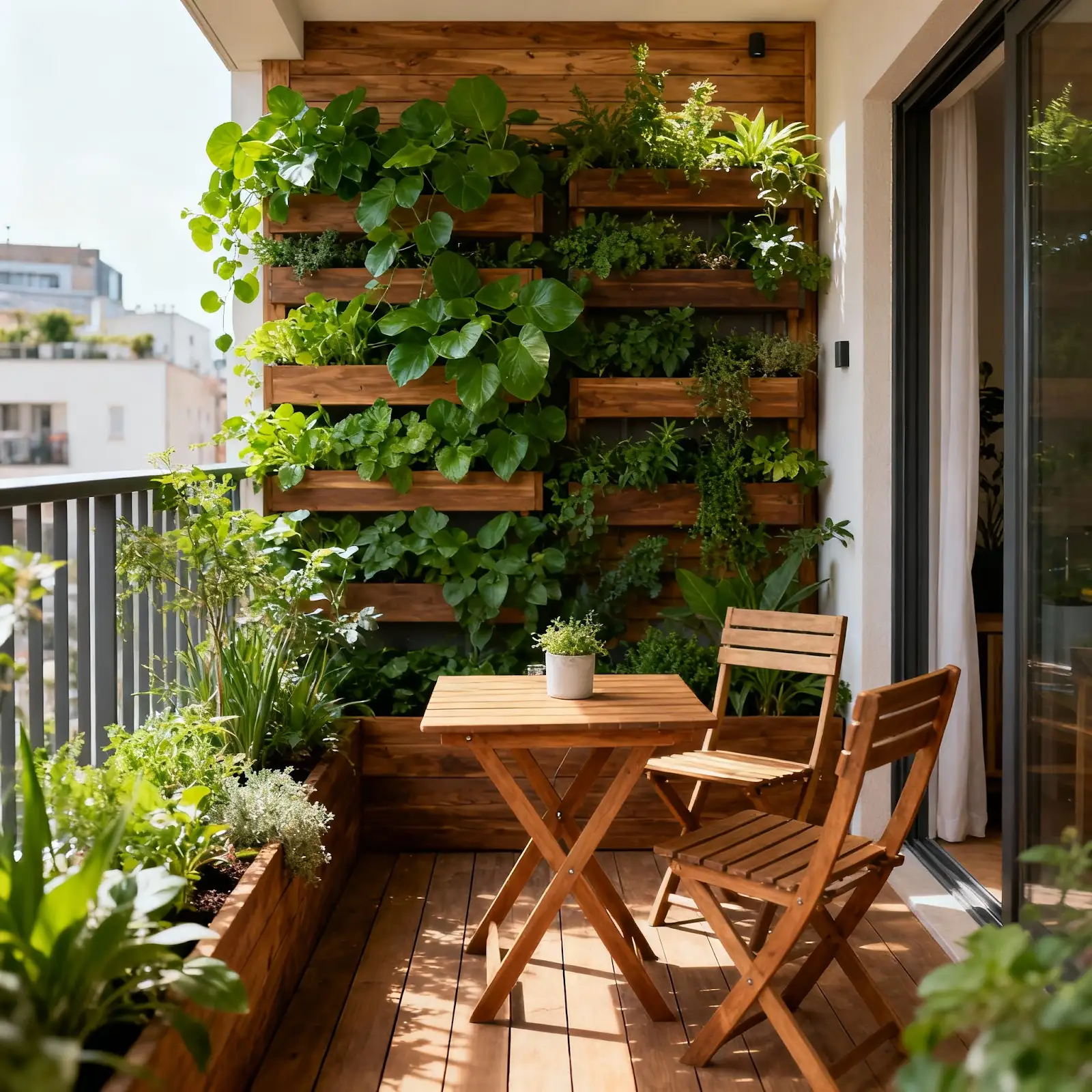
Small urban balcony garden with vertical planting and wooden furniture creating a cozy green space
Container Gardening Excellence
The sophistication of container gardening has reached unprecedented levels, with carefully curated plant combinations creating stunning displays for courtyards, patios, and roof terraces. Boma's expert plant selection demonstrates how thoughtful container design can showcase flowering perennials, architectural grasses, and evergreen structure plants in harmonious combinations that provide year-round interest.
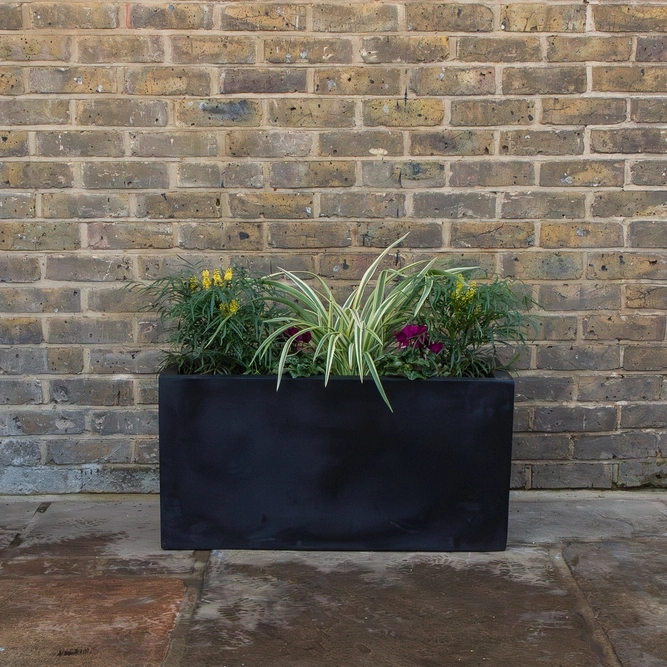
Polystone Deep Outdoor Trough L80cm x W29cm x H40cm, £199.99
Micro Forest Gardening and Layered Ecosystems
Forest gardening principles are being adapted for urban environments, creating multi-layered plantings that mimic woodland ecosystems while requiring minimal maintenance. This approach proves particularly valuable for North London gardens where mature trees already provide natural canopy structure.
“Micro forests” as small as 3 × 3m are being created and showcased, demonstrating how many perennial edible crops you could grow together in a small space within your own garden. Even compact urban gardens can incorporate forest gardening principles through careful layer selection.
Compact tree varieties form the canopy layer, with smaller shrubs and perennials densely positioned beneath to create self-sustaining plant communities. This approach works exceptionally well in shaded areas common to London's Victorian terraces.
The layered approach extends to container gardening, where large pots accommodate multiple plant stories from small trees down to ground-covering plants. This technique creates the visual complexity and ecological benefits of forest gardening even on balconies and roof terraces.
Native Plants and Biodiversity Focus
British gardeners are increasingly incorporating native species into their planting schemes, with the National Wildlife Federation recommending that gardens strive for 70% native plants to support local ecosystems. This trend reflects growing awareness of gardens' crucial role in supporting urban wildlife populations and maintaining ecological corridors through built environments.
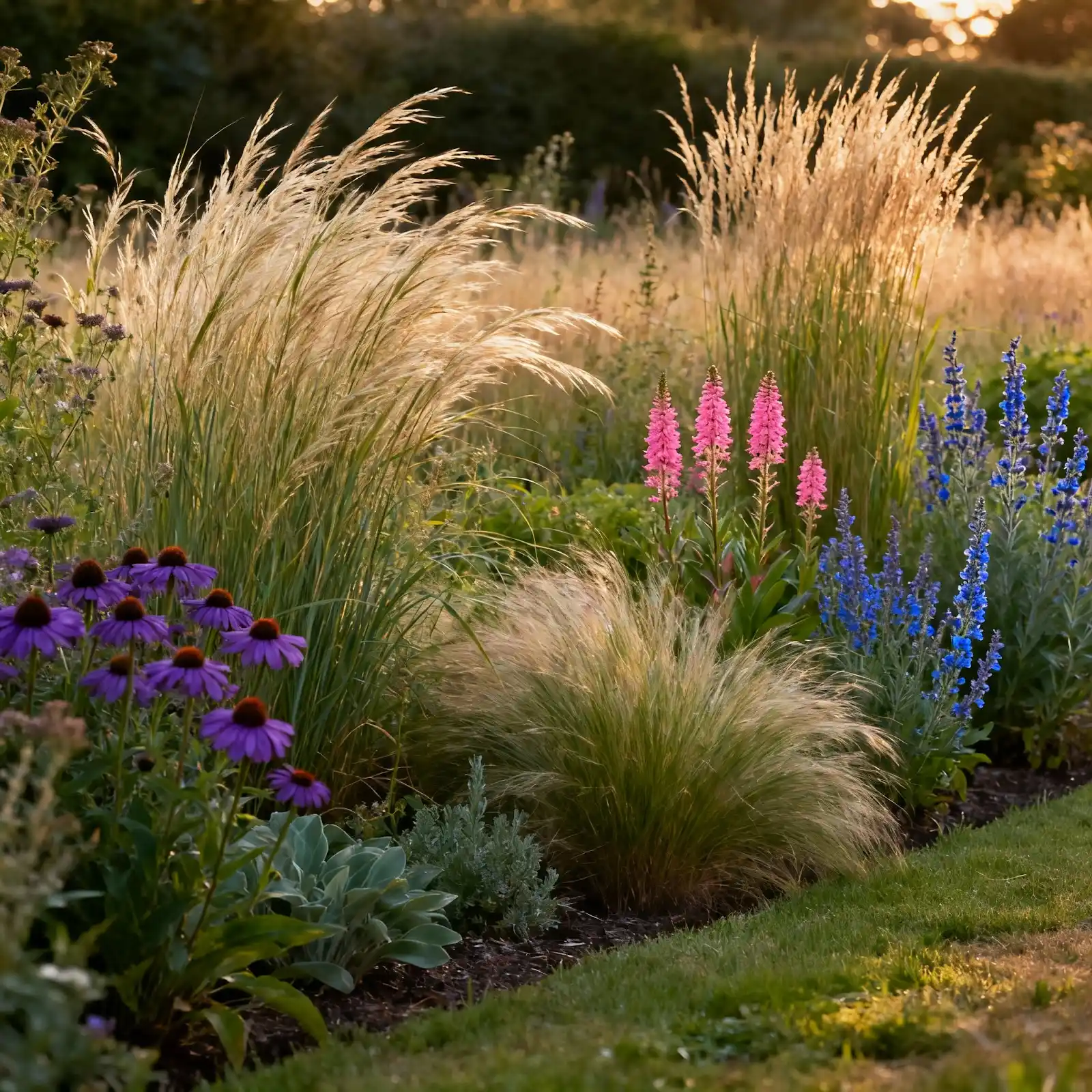
Prairie-style garden border with native UK perennials, grasses, and vibrant flowering plants
Pollinator-Friendly Plantings
The emphasis on pollinator support has transformed plant selection criteria, with flowering schedules becoming as important as aesthetic considerations. Gardeners are selecting plants that provide nectar sources from early spring through late autumn, creating continuous food supplies for bees, butterflies, and other beneficial insects.
Native options like cow parsley, purple moor grass, and hawthorn are being integrated with non-native but pollinator-friendly species to create diverse, ecologically valuable gardens. This approach supports local wildlife while maintaining the visual appeal essential for urban garden design.
Creating wildlife-friendly spaces has become a priority for London gardeners, with over 14,000 different species of plants, animals and fungi recorded in London. Garden features like bird boxes, hibernation shelters, and small water features being integrated into garden designs. These elements support urban biodiversity while adding interest and educational value for families.
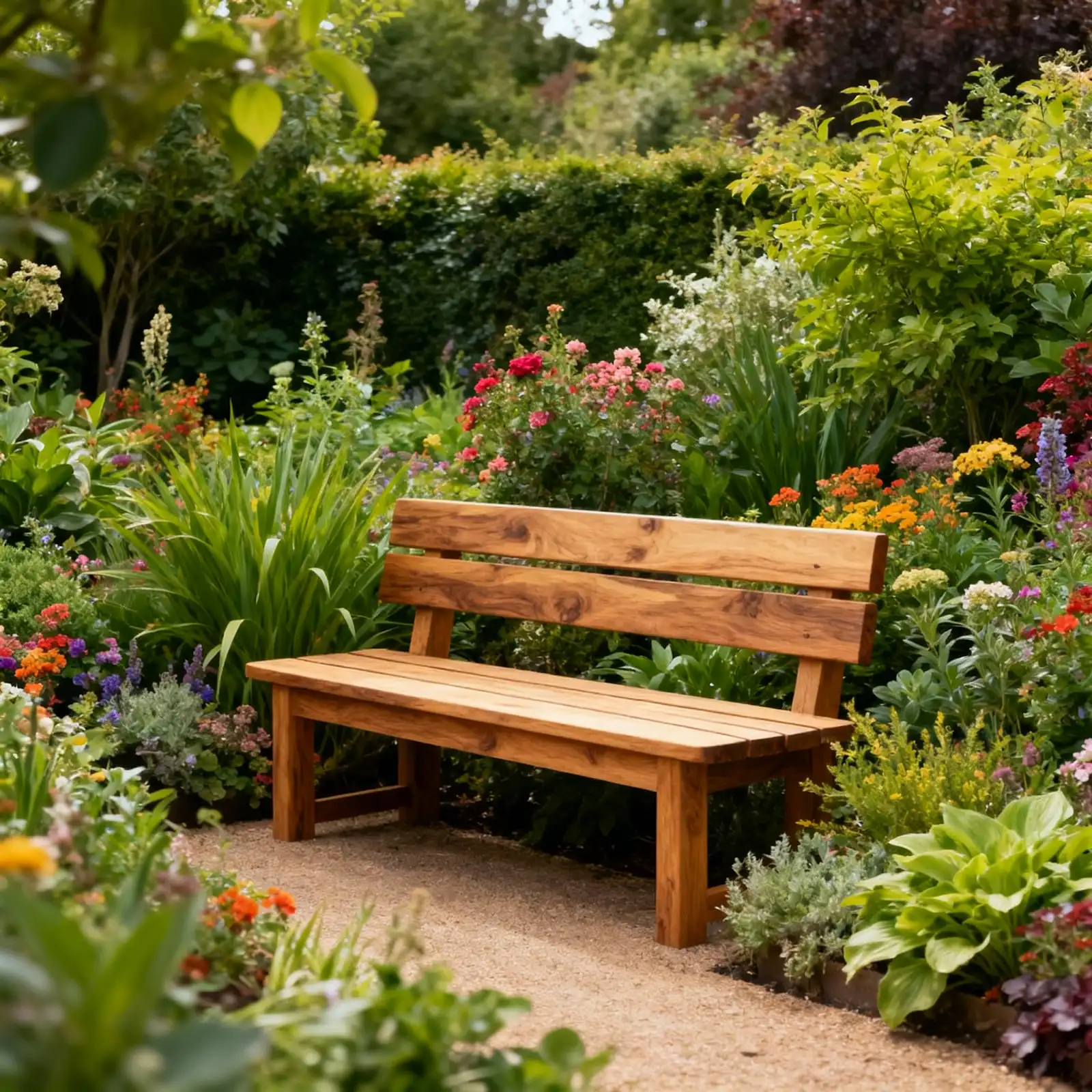
Lush garden with diverse flowering plants and wooden seating illustrating harmonious garden design and planting variety
Cutting Gardens and Seasonal Flower Production
UK flower production jumped from £126m in 2019 to £179m in 2023, according to figures from the Department for Environment, Food and Rural Affairs. As such, cutting gardens are rising in popularity as sustainable sources of fresh flowers that link indoor and outdoor spaces. They combine environmental benefits with the joy of home flower arranging.
Gladioli, dahlias, lupins, Shasta daisies, and asters are favoured for their long flowering seasons, visual impact, and vase life. The trend also includes herbs and foliage plants, chosen for both culinary use and floral arrangements—maximising value in limited spaces.
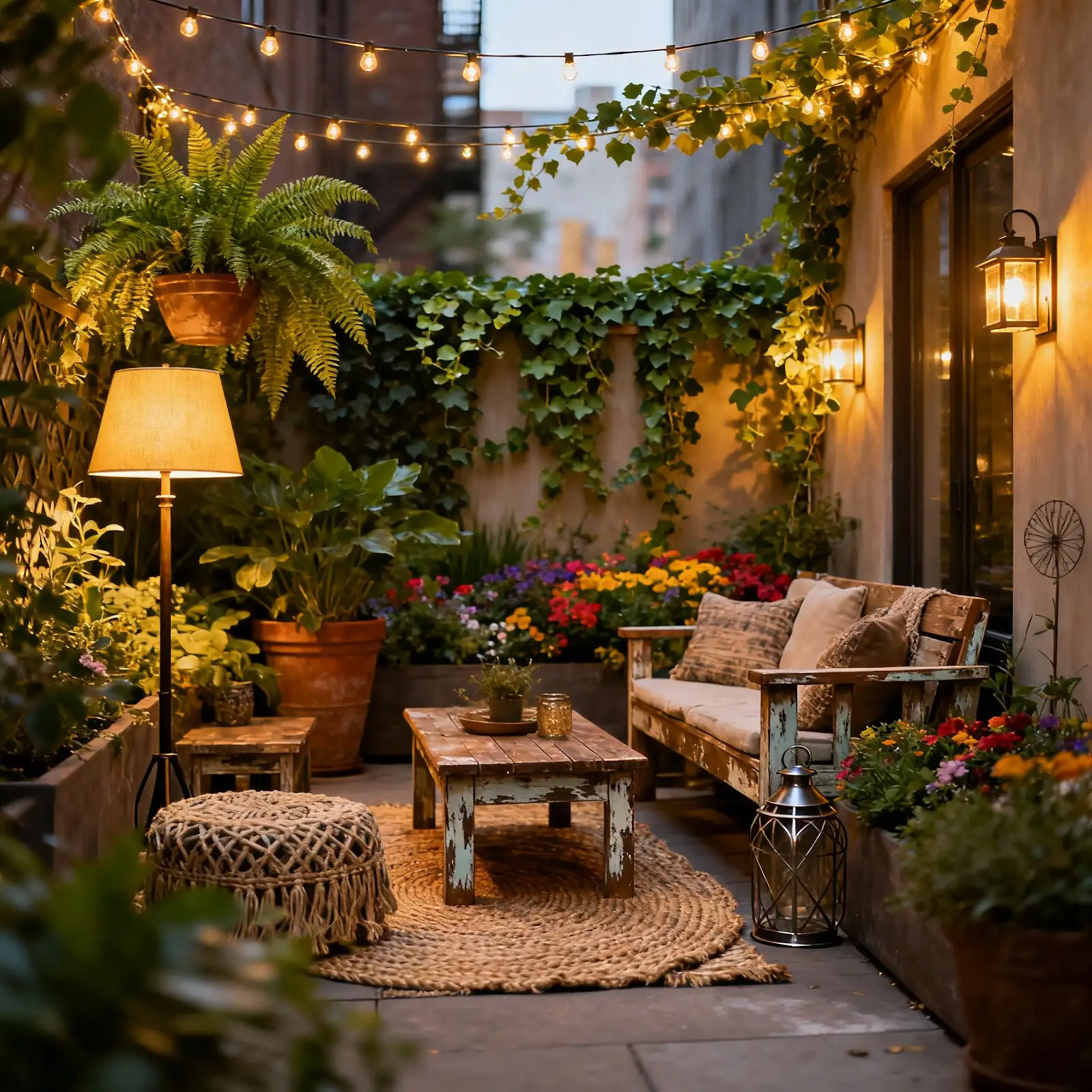 Cozy and stylish small garden patio with ambient lighting and lush greenery, ideal for urban spaces
Cozy and stylish small garden patio with ambient lighting and lush greenery, ideal for urban spaces
Bold Colour Trends and Mediterranean Influence
Garden palettes in 2025 shifted from soft pastels to bold, saturated tones for greater impact. Deep purples, burgundies, and blues define the rising gothic aesthetic, offering striking contrast against metallic foliage and architectural plants. Bronze and purple-leaved varieties extend this trend into foliage, ensuring year-round colour, even through winter.
Mediterranean influences are also growing, with silver-leaved plants, succulents, and aromatic herbs creating sun-drenched, coastal-style spaces—especially suited to South-facing courtyards and terraces.
Predictions for 2026: 4 Emerging Garden Trends
Looking ahead to 2026, several emerging trends are already showing early adoption among forward-thinking gardeners. These developments promise to further transform British garden design and planting practices.
AI-Enhanced Plant Care and Smart Gardening Integration
Smart technology is reshaping garden care in 2025, making it easier for busy urban professionals to maintain vibrant spaces. Advanced irrigation systems tailored to London conditions use sensors to track soil moisture, weather, and plant needs, delivering precise watering. This is especially useful for container gardens and roof terraces, where hot weather causes rapid moisture loss. Automated schedules ensure plants stay healthy even when owners are away.
Another rising ‘Hortifuturist’ trend is the increase in gardening technology powered by artificial intelligence. Artificial intelligence applications for plant identification, care scheduling, and problem diagnosis are expected to become mainstream tools for home gardeners. These technologies will democratise expert horticultural knowledge, making it accessible to gardeners at all experience levels.
Robotic lawnmowers and automated tools are also becoming more accessible, reducing maintenance demands and freeing gardeners to focus on creative design.
Precision Gardening Techniques
Precision gardening, inspired by precision agriculture, involving detailed monitoring of soil conditions, plant health, and environmental factors, represents the future of efficient garden management. This approach optimises resource use while maximising plant performance through data-driven decision making.
Bento Box Garden Design
The 'bento box' approach to garden design involves creating distinct but interconnected planting areas, each with specific functions or themes. This technique works particularly well for small urban gardens where different areas can serve multiple purposes while maintaining overall design coherence.
Expert Plant Selection and Planting Services
The complexity of modern garden design increasingly requires professional expertise, particularly for challenging urban sites where soil conditions, microclimates, and space constraints demand specialist knowledge. Professional planting services offer consultations, layout planning, and plant combination advice that transforms initial ideas into practical, successful garden solutions.
Summary and Key Takeaways
The evolution of UK garden trends through 2025 and into 2026 reflects a sophisticated understanding of how outdoor spaces can address environmental challenges while providing beauty, functionality, and personal satisfaction.
From the innovative vertical gardens of Central London to the climate-resilient plantings of Hampstead's garden squares, these trends demonstrate how expert horticultural knowledge, sustainable practices, and thoughtful design combine to create gardens that truly enhance urban living. As these trends continue developing, they promise to create increasingly sophisticated, beautiful, and ecologically valuable outdoor spaces across London's diverse neighbourhoods.
For readers following the latest trends towards more beautiful, functional, and environmentally conscious gardens, Boma offers both the knowledge and hands-on planting services to bring any vision to life—from initial ideas to vibrant, enduring outdoor spaces.
Get in touch or visit us in Kentish Town to unlock everything contemporary garden design has to offer!




